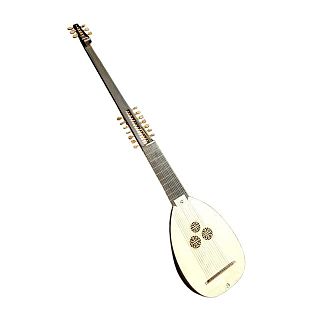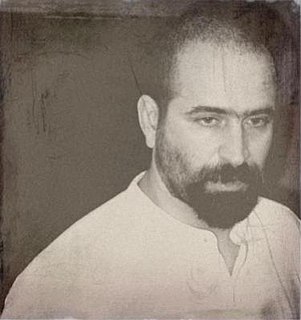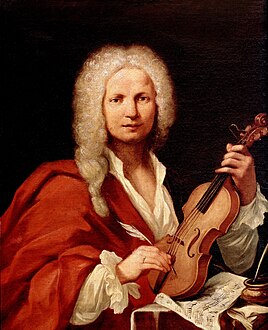
Massimo Marchese (born 31 August 1965 in Savona, Italy) is an Italian musician, lutenist, [1] theorbist and recording artist. [2] [3]

Massimo Marchese (born 31 August 1965 in Savona, Italy) is an Italian musician, lutenist, [1] theorbist and recording artist. [2] [3]
Born in Savona in the Italian region of Liguria, Marchese was a student of Jakob Lindberg at the Royal College of Music in London. [4]
He collaborated with the pipa player Jiao Xiangwen [5] and the poet Sandro Boccardi [6] He accompanied Nigel Rogers, Ottavio Dantone, Flavio Colusso, Flavio Emilio Scogna, and many ensemble as a Basso continuo musician.
He played in Europe, Asia and South America.
His recordings include the works of Francesco Spinacino , Franciscus Bossinensis, Joachim van den Hove , Robert de Visée, Gabriele Fallamero, [7] and Roman Turovsky-Savchuk. [8]

The classical guitar is a member of the guitar family used in classical music and other styles. An acoustic wooden string instrument with strings made of gut or nylon, it is a precursor of the modern acoustic and electric guitars, both of which use metal strings. Classical guitars derive from the Spanish vihuela and gittern of the fifteenth and sixteenth century. Those instruments evolved into the seventeenth and eighteenth-century baroque guitar—and by the mid-nineteenth century, early forms of the modern classical guitar.

A lute is any plucked string instrument with a neck and a deep round back enclosing a hollow cavity, usually with a sound hole or opening in the body. It may be either fretted or unfretted.
A mandolin is a stringed musical instrument in the lute family and is generally plucked with a plectrum. It most commonly has four courses of doubled metal strings tuned in unison, thus giving a total of 8 strings, although five and six course versions also exist. The courses are typically tuned in an interval of perfect fifths, with the same tuning as a violin. Also, like the violin, it is the soprano member of a family that includes the mandola, octave mandolin, mandocello and mandobass.

The viol, viola da gamba, or informally gamba, is any one of a family of bowed, fretted, and stringed instruments with hollow wooden bodies and pegboxes where the tension on the strings can be increased or decreased to adjust the pitch of each of the strings. Frets on the viol are usually made of gut, tied on the fingerboard around the instrument's neck, to enable the performer to stop the strings more cleanly. Frets improve consistency of intonation and lend the stopped notes a tone that better matches the open strings. Viols first appeared in Spain in the mid-to-late 15th century, and were most popular in the Renaissance and Baroque (1600–1750) periods. Early ancestors include the Arabic rebab and the medieval European vielle, but later, more direct possible ancestors include the Venetian viole and the 15th- and 16th-century Spanish vihuela, a six-course plucked instrument tuned like a lute that looked like but was quite distinct from the four-course guitar.

A chaconne is a type of musical composition often used as a vehicle for variation on a repeated short harmonic progression, often involving a fairly short repetitive bass-line which offers a compositional outline for variation, decoration, figuration and melodic invention. In this it closely resembles the passacaglia. It originates and was particularly popular in the Baroque era; a large number of Chaconnes exist from the 17th- and 18th- centuries.

The theorbo is a plucked string instrument of the lute family, with an extended neck and a second pegbox. Like a lute, a theorbo has a curved-back sound box with a wooden top, typically with a sound hole, and a neck extending out from the soundbox. As with the lute, the player plucks or strums the strings with one hand while "fretting" the strings with the other hand; pressing the strings in different places on the neck produces different pitches (notes), thus enabling the performer to play chords, basslines and melodies.

The pipa, pípá, or p'i-p'a is a traditional Chinese musical instrument, belonging to the plucked category of instruments. Sometimes called the "Chinese lute“, the instrument has a pear-shaped wooden body with a varying number of frets ranging from 12 to 31. Another Chinese four-string plucked lute is the liuqin, which looks like a smaller version of the pipa. The pear-shaped instrument may have existed in China as early as the Han dynasty, and although historically the term pipa was once used to refer to a variety of plucked chordophones, its usage since the Song dynasty refers exclusively to the pear-shaped instrument.

Barbara Strozzi was an Italian composer and singer of the Baroque Period. During her lifetime, Strozzi published eight volumes of her own music, and had more secular music in print than any other composer of the era. This was achieved without any support from the Church and with no consistent patronage from the nobility.

Alessandro "Sandro" Pertini was an Italian socialist politician who served as the president of Italy from 1978 to 1985.

The Italy national basketball team represents Italy in men's international basketball tournaments. They are administered by the Italian Basketball Federation (FIP).

The gittern was a relatively small gut-strung, round-backed instrument that first appears in literature and pictorial representation during the 13th century in Western Europe. It is usually depicted played with a quill plectrum, as can be seen clearly beginning in manuscript illuminations from the thirteenth century. It was also called the guiterna in Spain, guiterne or guiterre in France, the chitarra in Italy and Quintern in Germany. A popular instrument with court musicians, minstrels, and amateurs, the gittern is considered an ancestor of the modern guitar and other instruments like the mandore, bandurria and gallichon.

The Baroque guitar is a string instrument with five courses of gut strings and moveable gut frets. The first course sometimes used only a single string.

Roman Turovsky-Savchuk is an American artist-painter, photographer and videoinstallation artist, as well as a lutenist-composer, born in Ukraine. His musical works were published under various pseudonyms, including Johann Joachim Sautscheck.
Rob MacKillop is a Scottish composer and multi-instrumentalist, specializing in lute, theorbo, vihuela, banjo, ukulele and both classical and Russian guitar. He is an important performer of Early Music in Scotland. He is also a photographer.

Giulio Castagnoli is an Italian composer.

Grosso mogul, also Il grosso mogul, or capitalised [Il] Grosso Mogul, RV 208, is a violin concerto in D major by Antonio Vivaldi. The concerto, in three movements, is an early work by the Venetian composer. Around the mid-1710s Johann Sebastian Bach transcribed the concerto for organ, BWV 594, in C major. A simplified version of the violin concerto, RV 208a, without the elaborated cadenzas that appear in manuscript versions of RV 208, and with a different middle movement, was published around 1720 in Amsterdam as concerto #11 of Vivaldi's Op. 7.

Lutes are stringed musical instruments that include a body and "a neck which serves both as a handle and as a means of stretching the strings beyond the body".
This is a list of Italian television related events from 1980.
{{cite web}}: CS1 maint: archived copy as title (link){{cite web}}: CS1 maint: archived copy as title (link)